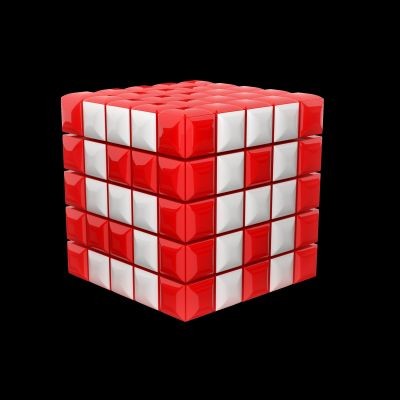Explaining The Periodic Table, Protons & Electrons - Chemistry 101 #Chemistry
This video explains how the structure of the atom is directly responsible for the shape of the Periodic Table, and allows scientists to read the personality of each kind of atom due to its position. Protons, electrons, and neutrons explain everything about how an atom works and the making of the periodic table itself.
00:15 Scientists J J Thompson (1897), E Rutherford (1907) and J Chadwich (1932) discovery
00:25 Smaller particles: Positively charged protons and electrically neutral neutrons in the center called nucleus
00:51 The Nucleus
01:23 The atom is mainly empty space
01:46 Henry Moseley (1913) discovered that Atomic Number = Number of Protons
02:32 Number of protons = Number of electrons (in a neutral atom)
03:10 Isotopes
03:25 Atomic Mass Unit AMU
04:30 Neutorns have a big effect on the atomic weight but do not matter much in making chemical bonds
04:50 Electron Shells
05:15 Electrons are like guests in a hotel
06:20 Quantum Jump
06:38 Valence Electrons
07:00 Hydrogen
07:35 Helium
08:15 The Periodic Table
08:22 Lithium
08:52 Beryllium
09:00 Boron
09:17 Carbon
09:23 Nitrogen
09:30 Oxygen
09:35 Fluorine
09:39 Neon
09:55 Third shell
10:00 Sodium
10:30 Magnesium
10:40 Alkaline Earth Metals - the same number of valence electrons
11:53 Period 3
13:20 They can explain almost all of chemistry
13:38 Periodic Table Trends
14:00 Next video URL:
Video transcript:
“
To explain how atoms behave, we need to look inside them.
About a hundred years ago scientists discovered that atoms aren’t like tiny solid marbles as they thought, but made of three much, much smaller particles - positively charged protons and electrically neutral neutrons in their centre, called the nucleus, and negatively charged electrons orbiting on the outside in shells. See our video about how scientists discovered protons, electrons and neutrons at the link in the descrIption:
https://www.youtube.com/watch?v=kBgIMRV895w
THE NUCLEUS
The nucleus is much smaller than shown here in the diagram. If an atom were the size of a football stadium, then its nucleus would be the size of a pea. This means the atom is mostly empty space. And so are YOU.
Even though the nucleus is tiny, it makes up over 99.9% of the atom’s mass. That’s because protons and neutrons are 2 thousand times heavier than electrons. So they don’t matter much.
In 1913, Henry Moseley discovered that an element’s Atomic Number was always the same as the number of protons in its nucleus. What a coincidence! This is now the modern definition of Atomic Number.
This atom has 5 protons so its Atomic Number is 5. This is the number above the element’s symbol on the PT. Which element is it? …. Boron.
In an electrically neutral atom, the number of positive Protons must equal the number of negative electrons so that their charges cancel. So a boron also has 5 electrons. The job of neutrons is to overcome the proton-proton repulsions, and to keep the nucleus together. Most boron atoms use 6 neutrons to stabilize their nuclei, but some can get away with 5. The number of neutrons can vary between atoms of the same kind, so scientists give these a special name- isotopes. So boron has two! isotopes.
Protons and neutrons both have a mass of about 1 atomic mass unit, or amu, or just u, or even the Dalton. They all mean the same thing, which is a bit annoying. Call me old fashioned, but I prefer amu. Scientists use this tiny mass unit for atoms as grams or pounds are too big. Electrons weigh hardly anything. So the atom’s mass is just the sum of its protons and neutrons. Both boron's have 5 protons, so its 6-neutron isotope would weigh 11, and its 5-neutron isotope 10 amu. It’s Atomic Weight shown on the PT is 10.8 and is the average of its two isotopes. It’s is closer to 11 because it’s the more abundant one.
Neutrons have a big effect on Atomic Weight, but don’t matter much in making chemical bonds, which we’re interested in here. So we’ll just look at protons and electrons from now on. Bye, bye neutrons. And Atomic Weights.
ELECTRON SHELLS
The first electron shell can accommodate 2 electrons before it’s full, while the 2nd shell can accommodate up to 8. This is why boron has only 2 electrons in its 1st shell, and the remaining 3 electrons in the 2nd shell.
Electrons are like guests in a hotel. Here’s a normal hotel. And here’s the Quantum Hotel that better shows how electrons fit around an atom. The 1st floor can take 2 guests before it’s full, the 2nd floor also 8, the 3rd floor 8, and the 4th and 5th 18 each. When a floor is full a new arrival is sent to the next floor up. This guest on the 4th floor has more energy than the guests below, which she would find out if she jumped. When she lands, the energy she had turns into sound energy. Electrons in higher levels also have more energy, and when they jump down, light energy is emitted instead. This is called a quantum jump.
“





















